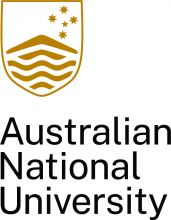Stimulus measures totalling over A$20 billion (£10.1 billion) are all but bypassing Australian universities as governments shell out taxpayer funds to ward off a coronavirus-induced recession.
Small and medium-sized businesses will attract the lion’s share of the federal government’s A$17.6 billion stimulus package revealed on 12 March. A$11.9 billion will go towards measures including enhanced tax write-offs, tax-free payments and subsidies for apprentices’ wages. Welfare recipients will receive one-off A$750 payments, costing the government another A$4.8 billion
Just A$1 billion will be allocated to support “sectors, regions and communities” that have been “disproportionately affected” by the coronavirus, including tourism and agriculture, as well as education.
Most of this money appears headed for small businesses, particularly tourism operators, with the government highlighting the “waiver of fees and charges for tourism businesses” and “assistance to help businesses identify alternative export markets” as measures to be pursued.
Universities Australia said it would “carefully examine the detail” to determine which parts of the package were directly relevant to its members. Chief executive Catriona Jackson said students on income support would welcome the A$750 payments.
She said universities were “central to the economic prosperity” of many of the regions and communities most affected by the outbreak. “We are continuing to talk to government about how best to relieve growing financial pressure on the higher education sector,” she said, adding that universities were “already implementing a range of measures” to address the “serious budgetary repercussions” of the pandemic.
Training colleges will benefit indirectly from the apprentice subsidy, which the government says will cover half the wages of around 120,000 apprentices and trainees – often the first people retrenched during downturns – for up to nine months.
Meanwhile, research claimed just 1.25 per cent of a separate A$2.4 billion package announced on 11 March to bolster the health system’s capacity to deal with the pandemic. Funded measures include a national triage phone line, a medicine home-delivery service, dedicated respiratory clinics, additional pathology tests and extra funding for hospitals and aged care centres.
While A$30 million was put aside for research towards vaccine, anti-viral and respiratory medicine development, the money will come from the already funded Medical Research Future Fund.
Little detail has been provided about yet another A$350 million stimulus package announced on 11 March by the South Australian government. So far there are no indications that the package will include measures to assist education, despite premier Steven Marshall telling reporters that South Australia had seen a “very significant effect [on] the number of international students”.
The apparent overlooking of universities will please critics who say they wilfully courted disaster by allowing themselves to become overdependent on revenue from Chinese students. The large research-intensive universities of Sydney, Melbourne and Brisbane have accelerated their recruitment of overseas students since 2014, helping push education export earnings to A$39.9 billion last year – around double the takings just four years earlier.
Australian National University higher education expert Andrew Norton said the institutions most vulnerable to a financial hit from the coronavirus were “relatively” wealthy. “The real danger is that universities that have essentially sound long-term business models cannot withstand a temporary but big hit to their revenues,” Professor Norton blogged.
He said that while a legislative provision allowed the government to give universities cash advances under certain circumstances, it was not clear that they included pandemic-induced financial problems. In any case, the payments had been capped at A$25 million, which “would not be enough to deal with a broad sector crisis”.
While there were no signs that any university was even considering requesting a cash advance, “2020 is already rich in outlier events”, Professor Norton noted.
Register to continue
Why register?
- Registration is free and only takes a moment
- Once registered, you can read 3 articles a month
- Sign up for our newsletter
Subscribe
Or subscribe for unlimited access to:
- Unlimited access to news, views, insights & reviews
- Digital editions
- Digital access to THE’s university and college rankings analysis
Already registered or a current subscriber? Login










